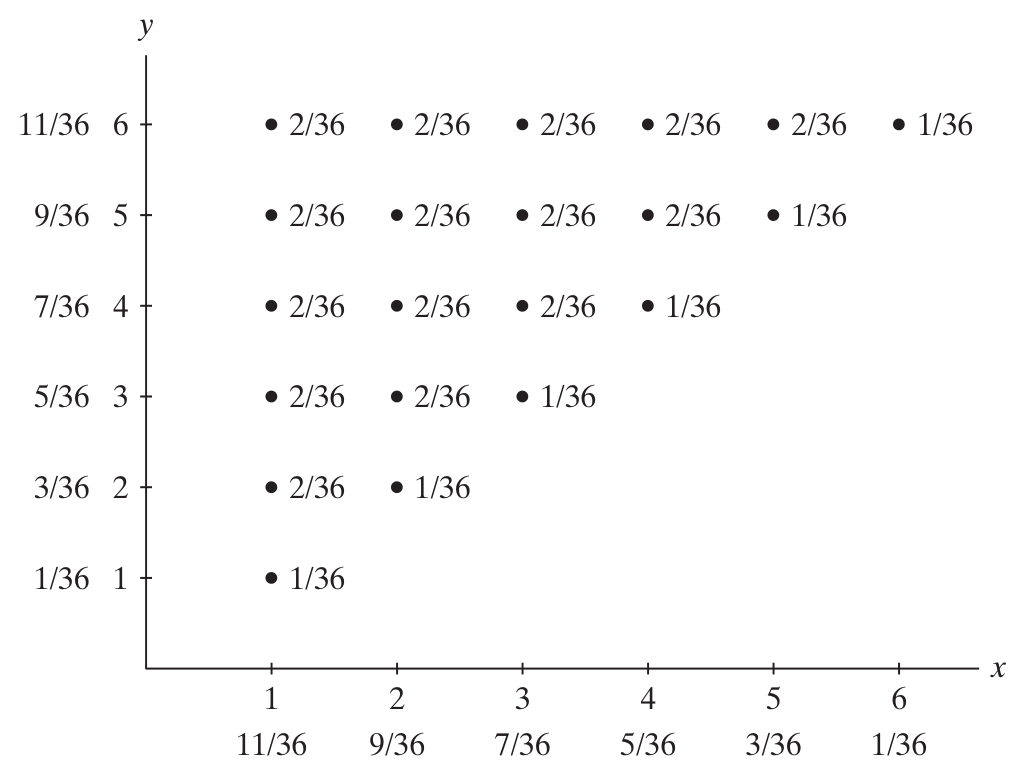Joint distributions
Joint and marginal PMFs - Smaller and bigger roll
Roll two dice, and let
Make a chart showing the PMF. Compute the marginal probabilities, and write them in the margins of the chart.
Solution

Event probability drawn from PMF table
Here is a joint PMF table:
Using the table, compute the following event probabilities:
(a)
Joint and marginal PMFs - Coin flipping
Flip a fair coin four times. Let
Make a chart showing the PMF. Compute the marginal probabilities, and write them in the margins of the chart.
Marginal and event probability from joint density
Suppose the joint density of
Solution
Compute the marginal PDF:
Find probability of the event
Marginals from joint density
The joint PDF for
Find
Event probability from joint density
The joint PDF for
Independent random variables
Event probability - Meeting in the park
A man and a woman arrange to meet in the park between 12:00 and 1:00 am. They both arrive at a random time with uniform distribution over that hour, and do not coordinate with each other.
Find the probability that the first person to arrive has to wait longer than 15 minutes for the second person to arrive.
Solution
Let
The probability we seek is:
Since the arrivals are independent of each other, we have
Since each arrival time is uniform over the interval, we have:
Uniform disk: Cartesian vs. polar
Suppose that a point is chosen uniformly at random on the unit disk.
(a) Let
(b) Let
Solution
(a)
Write
Then computing
By similar reasoning,
The product
(b)
To find the marginals
- !! The probability density
is not constant! The area of a differential sector depends on .
We can take two approaches to finding the density
- (i) Area of a differential sector divided by total area
- So the density is
- So the density is
- (ii) Compute CDF first, then use partial derivatives.
Elaborating on (ii): joint CDF then partials for joint PDF
The region ‘below’ a given point
, in polar coordinates, is a sector with area . The factor is a percentage of the circle with area . The density is a constant
across the disk, so the CDF at is this same area times . Thus: Then in polar coordinates the density is given by taking partial derivatives:
Once we have
Check independence:
In this problem it is feasible to find the marginals directly, without computing the new density, only using some geometric reasoning.
Direct geometric approach
The probability
is the area (over ) of a thickened circle with radius and thickness . The circumference of a circle at radius is . So the area of the thickened circle is . So the probability is . This tells us that the marginal probability density is . The probability
is the area (over ) of a thin sector with radius 1 and angle . This area is . So the probability is . This tells us that the marginal probability density is . These results agree with those of the ‘calculus’ approach above!